Related Research Articles

Ann Radcliffe was an English author and pioneer of Gothic fiction. Her technique of explaining apparently supernatural elements in her novels has been credited with gaining Gothic fiction respectability in the 1790s. Radcliffe was the most popular writer of her day and almost universally admired; contemporary critics called her the mighty enchantress and the Shakespeare of romance-writers, and her popularity continued through the 19th century. Interest has revived in the early 21st century, with the publication of paperback reprints and three biographies.

Archibald David Constable was a Scottish publisher, bookseller and stationer.

A chapbook is a type of street literature printed in early modern Europe. Produced cheaply, chapbooks were commonly small, paper-covered booklets, usually printed on a single sheet folded into books of 8, 12, 16 and 24 pages. They were often illustrated with crude woodcuts, which sometimes bore no relation to the text, and were often read aloud to an audience. When illustrations were included in chapbooks, they were considered popular prints.
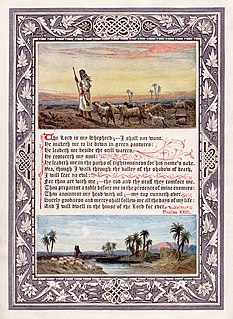
The Religious Tract Society, founded 1799, 56 Paternoster Row and 65 St. Paul's Chuchyard and 164 Piccadilly, was the original name of a major British publisher of tracts of Christian literature intended initially for evangelism, and including literature aimed at children, women, and the poor.
Eliza Fenwick was an English author, whose works include Secresy; or The Ruin on the Rock (1795) and several children's books. She was born in Cornwall, married an alcoholic, and had two children by him. She eventually left him to live with her children in Barbados, where she ran a school with her daughter.
The Cheap Repository Tracts consisted of more than two hundred moral, religious and occasionally political tracts issued in a number of series between March 1795 and 1817, and subsequently re-issued in various collected editions until the 1830s. They were devised by Hannah More and intended for sale or distribution to literate poor people, as an alternative to what she regarded as the immoral traditional broadside ballad and chapbook publications. The tracts proved to be enormously successful with more than two million copies sold or distributed during the first year of the scheme.
Francis Lathom was a British gothic novelist and playwright.
Edward Allde or Alde was an English printer in London during the Elizabethan and Jacobean eras. He was responsible for a number of significant texts in English Renaissance drama, including some of the early editions of plays by William Shakespeare.

Sampson Low (1797–1886) was a bookseller and publisher in London in the 19th century.

Henry Lemoine was a French music publisher, composer, and piano teacher.

George Nicol was a bookseller and publisher in 18th-century London. In 1781, he became bookseller to George III, a position he held until 1820. In 1785, he published an improved edition of James Cook's third voyage. In 1786, he became involved with John Boydell's Shakespeare Gallery and bore responsibility for the letterpress. He and the others in the project wanted to create a type that would be both utilitarian and beautiful.
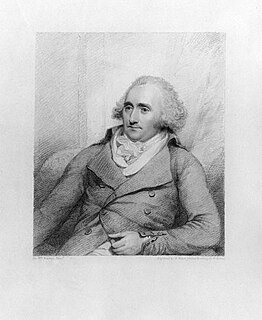
Thomas Cadell (1742–1802), often referred to as Thomas Cadell the elder, was a successful 18th-century English bookseller who published works by some of the most famous writers of the 18th century.

St. Irvyne; or, The Rosicrucian: A Romance is a Gothic horror novel written by Percy Bysshe Shelley in 1810 and published by John Joseph Stockdale in December of that year, dated 1811, in London anonymously as "by a Gentleman of the University of Oxford" while the author was an undergraduate. The main character is Wolfstein, a solitary wanderer, who encounters Ginotti, an alchemist of the Rosicrucian or Rose Cross Order who seeks to impart the secret of immortality. The book was reprinted in 1822 by Stockdale and in 1840 in The Romancist and the Novelist's Library: The Best Works of the Best Authors, Vol. III, edited by William Hazlitt. The novella was a follow-up to Shelley's first prose work, Zastrozzi, published earlier in 1810. St. Irvyne was republished in 1986 by Oxford University Press as part of the World's Classics series along with Zastrozzi and in 2002 by Broadview Press.
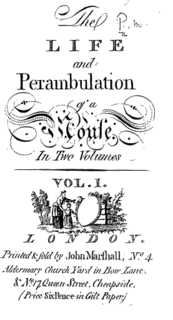
John Marshall was a London publisher who specialized in children's literature, chapbooks, educational games and teaching schemes. He described himself as "The Children's Printer" and referred to children as his "young friends" He was the preeminent children's book publisher in England from about 1780 until 1800. After 1795 he became the publisher of Hannah More's Cheap Repository Tracts, and following a dispute with More he published his own similar series. About 1800 Marshall began to publish a series of miniature libraries, games and picture books for children. He died in July 1824 and his business was continued either by his widow or his unmarried daughter, both of whom were named Eleanor.

Daniel Dancer (1716–1794) was a notorious English miser whose life was documented soon after his death and continued in print over the following century.
Thomas Hookham (ca.1739-1819) was a bookseller and publisher in London in the 18th-19th centuries. He issued works by Charlotte de Bournon, John Hassell, Pierre-Jean-Baptiste Nougaret, Ann Radcliffe, Clara Reeve, and others. As part of his business he ran a circulating library, established in 1764 and by the 1800s one of "the two largest in London." The library continued on Bond Street until it was acquired by Mudie's ca.1871. In addition, about 1794 he opened the Literary Assembly subscription reading rooms stocked with periodicals and reference books.

Henry Lemoine (1756–1812) was an English author and bookseller.
Sarah Scudgell Wilkinson was an English writer of children's books, novels, and chapbooks.
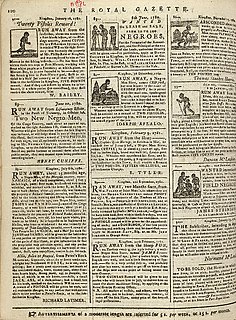
Alexander Aikman was a Scottish printer, newspaper publisher, planter, and member of Jamaica's House of Assembly. From 1805 to 1825, he was a member of the House of Assembly as the representative of Saint George parish.
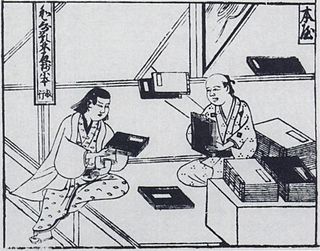
The selling of books dates back to ancient times. The founding of libraries in 300 BC stimulated the energies of the Athenian booksellers. In Rome, toward the end of the republic, it became the fashion to have a library, and Roman booksellers carried on a flourishing trade.
References
- ↑ "Literary Mushrooms: The Gothic Bluebook". The History of Gothic Publishing, 1800-1835: Exhuming the Trade. Archived from the original on 19 April 2015. Retrieved 19 April 2015.
- ↑ Goldthorpe, David (2004). "Lemoine, Henry (1756–1812), author and bookseller". Oxford Dictionary of National Biography (online ed.). Oxford University Press. doi:10.1093/ref:odnb/16430.(Subscription or UK public library membership required.)
- ↑ Bearden-White 2007, p. 32.
- ↑ Potter, Franz J. (2013). "Lemoine, Ann". In William Hughes; David Punter; Andrew Smith (eds.). The Encyclopedia of the Gothic. Wiley Blackwell. doi:10.1002/9781118398500.wbeotgl004. ISBN 9781118398500.
- ↑ Bearden-White 2007, p. 33.